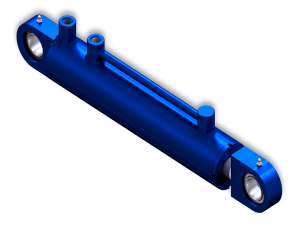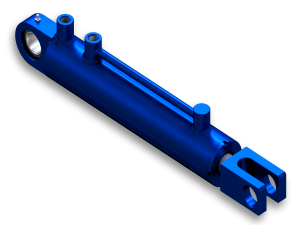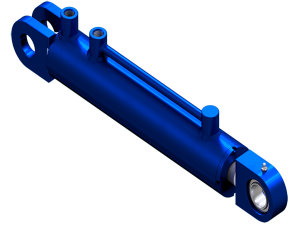HYDRAULIC CYLINDERS FOR CONSTRUCTION VEHICLES
Hydraulic cylinders for construction vehicles typically feature a robust cylindrical design, capable of handling heavy loads and offering high durability.
Structure of Hydraulic Cylinders in Construction Vehicles
1. Cylinder Barrel
• The outer cylindrical housing, made of high-strength steel.
• Designed to withstand high pressure and wear during operation.
• The inner surface is finely machined for smooth piston movement.
2. Piston & Piston Rod
• Piston:
o Fitted inside the cylinder barrel.
o Equipped with seals to separate the two oil chambers (rod side and cap side).
• Piston Rod:
o Connected to the piston and extends outside the cylinder.
o Transmits force outward, often chrome-plated for corrosion and wear resistance.
3. Seals & Gaskets
• Rod Seal: Prevents oil leakage.
• Piston Seal: Blocks oil flow between chambers.
• Wiper Seal: Keeps dirt and debris from entering the cylinder.
• Made of synthetic rubber, polyurethane, or PTFE for durability.
4. End Caps (Head & Base)
• Head Cap:
o Features a hole for the piston rod.
o Houses the rod seal.
• Base Cap:
o Mounted to the vehicle frame or working equipment.
o Acts as the cylinder’s fixed mounting point.
5. Hydraulic Ports
• Allow hydraulic oil to flow in/out, generating push/pull force.
• May follow BSP, NPT, or SAE standards.
6. Tie Rods or Snap Rings
• Used to secure cylinder components, depending on the design.
7. Mounting Pins (Clevis / Eye Joints)
• Attach the cylinder to the vehicle frame or equipment (dump body, lift arm, etc.).
• Allow rotational movement during operation.
Applications of Hydraulic Cylinders in Construction Vehicles
Hydraulic cylinders are essential for powering various heavy-duty operations—enabling lifting, lowering, tilting, pushing, and pulling with precision and strength. Key applications include:
1. Dump Trucks / Tipper Trucks
• Dump Cylinders (Telescopic or Single-Acting):
o Lift the truck bed to unload materials like sand, gravel, or soil.
o Often telescopic for long stroke length while remaining compact when retracted.
2. Excavators (Backhoes, Diggers)
• Boom Cylinder: Controls the main arm’s up/down movement.
• Arm (Stick) Cylinder: Extends/retracts the arm between the boom and bucket.
• Bucket Cylinder: Opens/closes the bucket for digging, scooping, or dumping.
3. Forklifts
• Lift Cylinder: Raises/lowers the forks to handle loads.
• Tilt Cylinder: Adjusts the mast angle for load stability.
• Side Shift Cylinder (if equipped): Moves the forks left/right for precise positioning.
4. Bulldozers
• Blade Lift Cylinder: Adjusts the blade height for grading.
• Blade Tilt/Angle Cylinder: Tilts or angles the blade for slope work.
5. Hydraulic Cranes
• Boom Lift Cylinder: Raises/lowers the crane arm.
• Boom Extension Cylinder: Extends/retracts the arm length.
• Outrigger Cylinder: Stabilizes the crane by lifting/lowering support legs.
6. Graders, Drills, Pile Drivers, etc.
• Used for controlling attachments like blades, drill heads, or compactors.
• Ensures precise and flexible operation in various construction tasks.







